
Art has always been a powerful medium for capturing the essence of humanity, and few subjects resonate as profoundly as the male form.
From the stoic leaders immortalized in history to introspective figures that evoke deep emotion, paintings of men reflect a rich tapestry of character and strength.
These artworks not only showcase the skill of the artists but also invite viewers to explore the complexities of masculinity through various cultural lenses.
Throughout history, renowned artists like Leonardo da Vinci and Vincent van Gogh have created iconic pieces that transcend time, leaving an indelible mark on the art world.
Prepare to embark on a journey through art history that celebrates the power and depth of male representation.
1. Portrait of a Man in Red Chalk (Self-Portrait) – Leonardo da Vinci
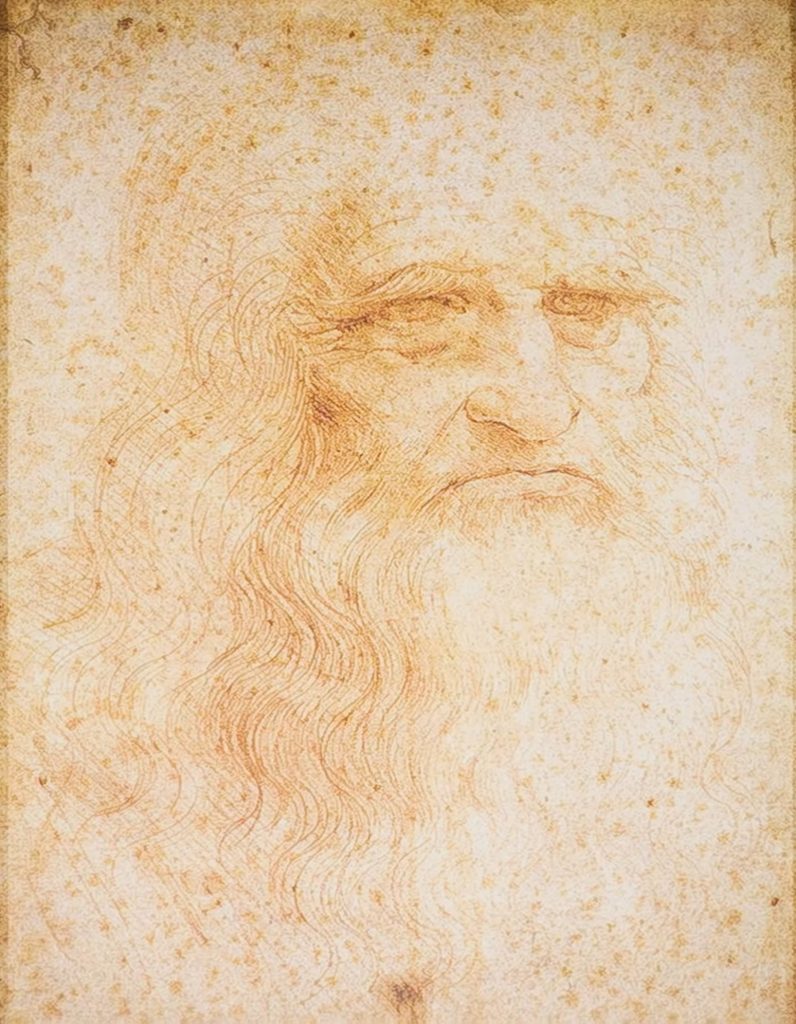
Portraying an aged man, Leonardo da Vinci’s Portrait of a Man in Red Chalk is often cited as his self-portrait. Created in 1512, this work showcases da Vinci’s mastery of red chalk, a preferred medium for sketching.
The drawing features pronounced lines on the forehead and a signature expression, capturing the essence of aging.
Its lifelike details highlight his deep understanding of human anatomy, showcasing a blend of artistry and scientific observation that defines the Renaissance.
2. Lansdowne Portrait – Gilbert Stuart

Gilbert Stuart’s Lansdowne Portrait captures George Washington in all his presidential glory. Completed in 1796, the painting features a full-bodied representation of Washington, showcasing his commanding presence.
Stuart faced immense pressure to finish this iconic artwork as a gift for British Prime Minister William Petty.
The portrait not only illustrates Washington’s leadership but also reflects the tumultuous era of the fledgling United States, emphasizing the artist’s ability to convey powerful historical narratives through paint.
3. Self-portrait with Felt Hat – Vincent van Gogh
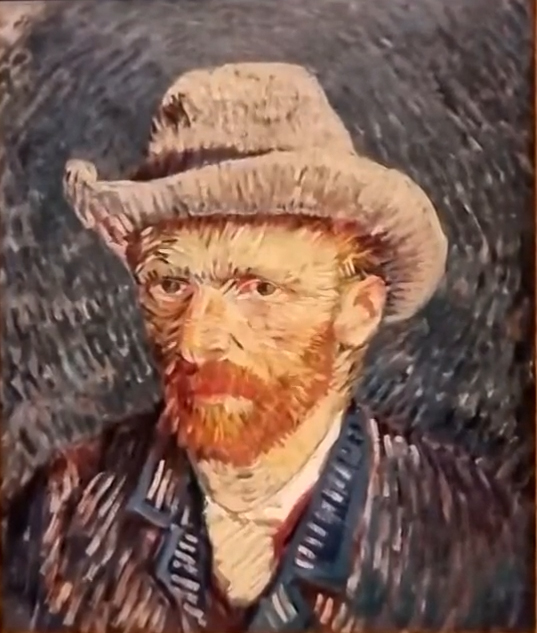
Vincent van Gogh created “Self-portrait with Felt Hat” in 1887, showcasing his unique style through colors and expressive brushwork. He often depicted himself in art, using it as a means of self-exploration.
This particular piece features Van Gogh in a blue overcoat and a felt hat, symbols of his emotional state during this period.
The deep blue background adds depth, while the layered brushstrokes breathe life into the composition. With over twenty self-portraits, Van Gogh’s works remain remarkable studies of the artist’s inner turmoil and strength.
4. Portrait of Abraham Lincoln – George Henry Story
George Henry Story captured the essence of Abraham Lincoln in his remarkable portrait completed in 1916, long after Lincoln’s assassination.
Story began his artistic journey as a woodcarver before studying in Europe, where he honed his painting skills. He worked closely with Lincoln, sketching him on three occasions to capture his likeness and expressions.
The portrait showcases realistic details, reflecting Lincoln’s personality and the weight of his presidential responsibilities. Story’s dedication to accuracy results in a profound depiction that resonates with viewers even today.
5. Portrait of an Old Man – Rembrandt van Rijn
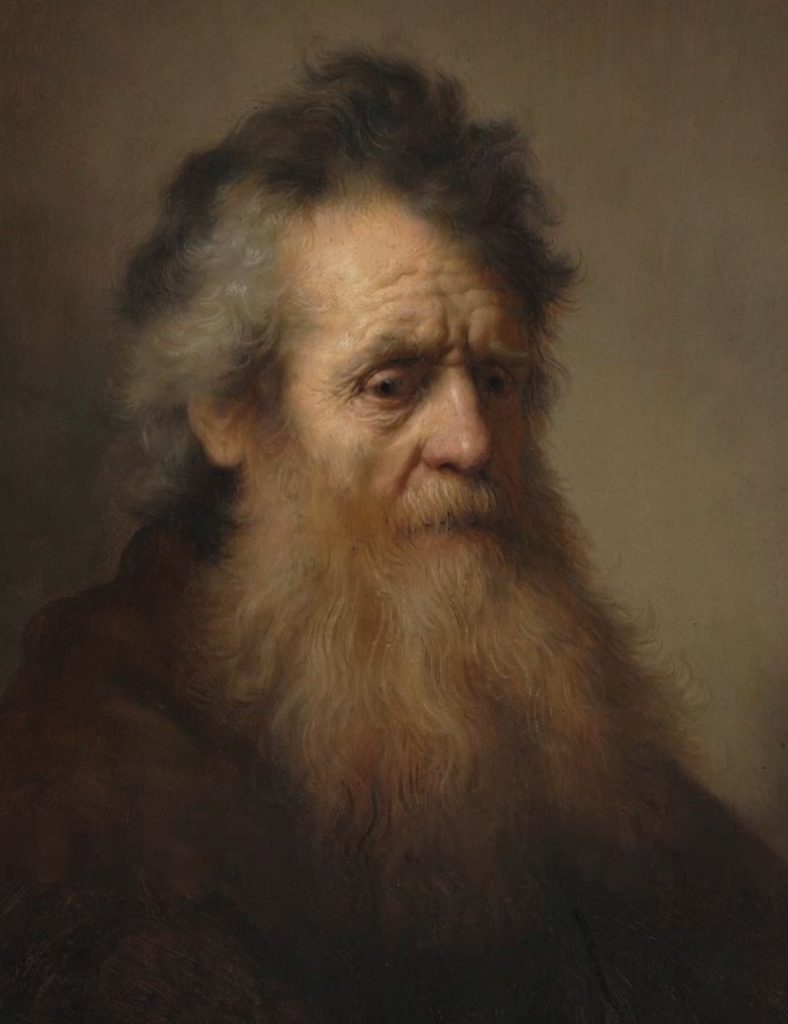
“Portrait of an Old Man,” painted in 1632, exemplifies Rembrandt’s mastery of realism. The subject, an unidentified weathered man, gazes downward, evoking a sense of introspection.
Rembrandt’s careful brushstrokes capture the textures of age, reflecting on life’s fleeting nature. The somber expression conveys deep emotions, inviting viewers to connect with the man’s memories.
This work is part of Rembrandt’s exploration of human experiences, showcasing his ability to portray complex psychological states through art.
6. Portrait of Mendeleev – Ilya Repin
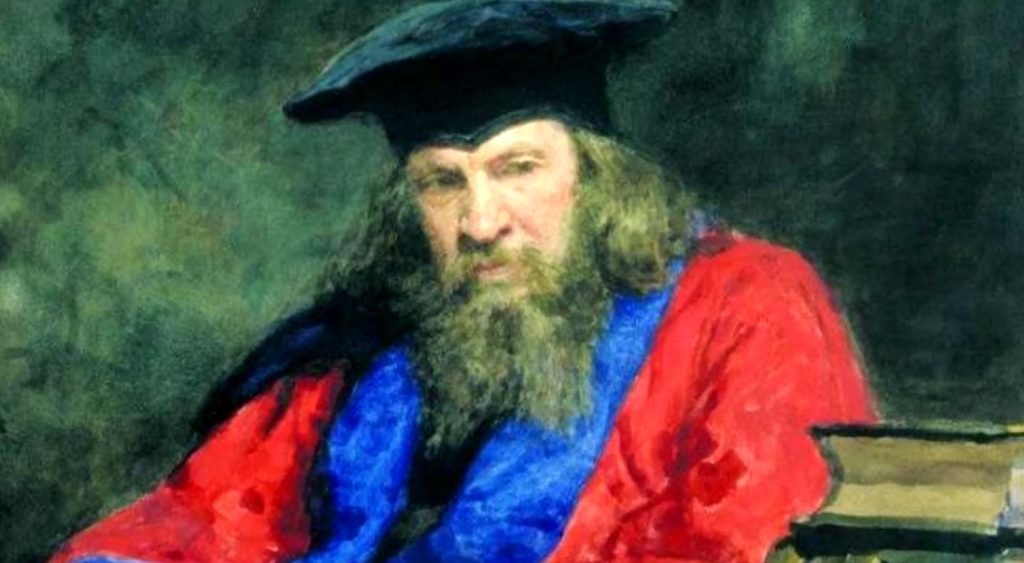
Ilya Repin’s “Portrait of Mendeleev,” completed in 1885, captures the famous Russian chemist Dmitry Mendeleev in a reflective pose.
The watercolor painting reveals remarkable detail, showcasing Mendeleev slouched in a chair, clad in a cap and gown, engrossed in a book.
His fingers mark specific pages, indicating deep engagement in study. This portrayal exemplifies Repin’s commitment to realism, illustrating not just Mendeleev’s appearance but also his intellectual spirit, making it a compelling representation of a pivotal figure in science.
7. Portrait of Woodrow Wilson – John Singer Sargent
John Singer Sargent completed the “Portrait of Woodrow Wilson” in 1917, capturing a pivotal moment in American history.
The oil-on-canvas painting showcases Wilson in a dark suit, seated against a muted background that symbolizes the burdens of leadership during World War I.
Sargent’s remarkable realism makes the portrait nearly photographic, highlighting Wilson’s dignified expression.
This artwork reflects not only Wilson’s personality but also the complexities he navigated while leading the nation through a challenging global conflict.
8. Thomas Jefferson – Rembrandt Peale
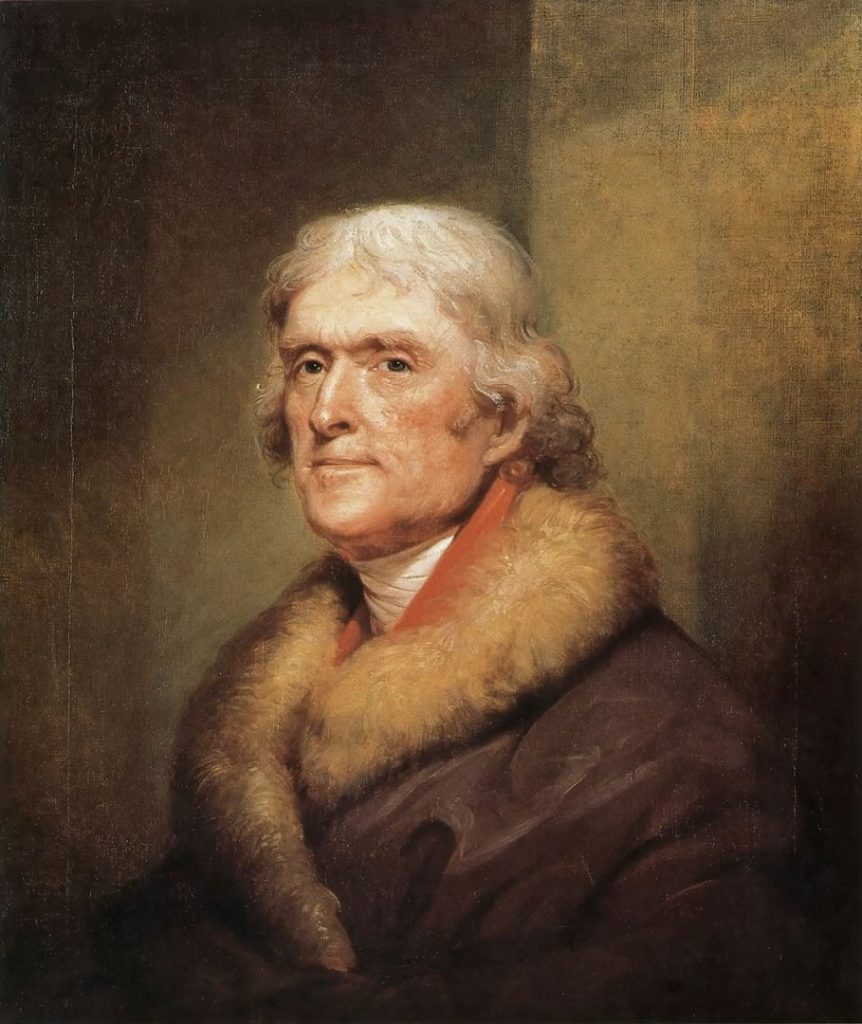
Thomas Jefferson is immortalized in Rembrandt Peale’s masterpiece, painted in 1800. The portrait captures Jefferson’s essence, showcasing his determination and intellect following the American Revolution.
Peale employs a striking color palette and detailed brushwork, presenting Jefferson in a contemplative pose, suggesting deep thoughts on democracy and governance.
Historians praise this artwork for its ability to convey Jefferson’s character and vision, making it a vital piece in understanding American history and the influential figures of that era.
9. The Desperate Man – Gustave Courbet
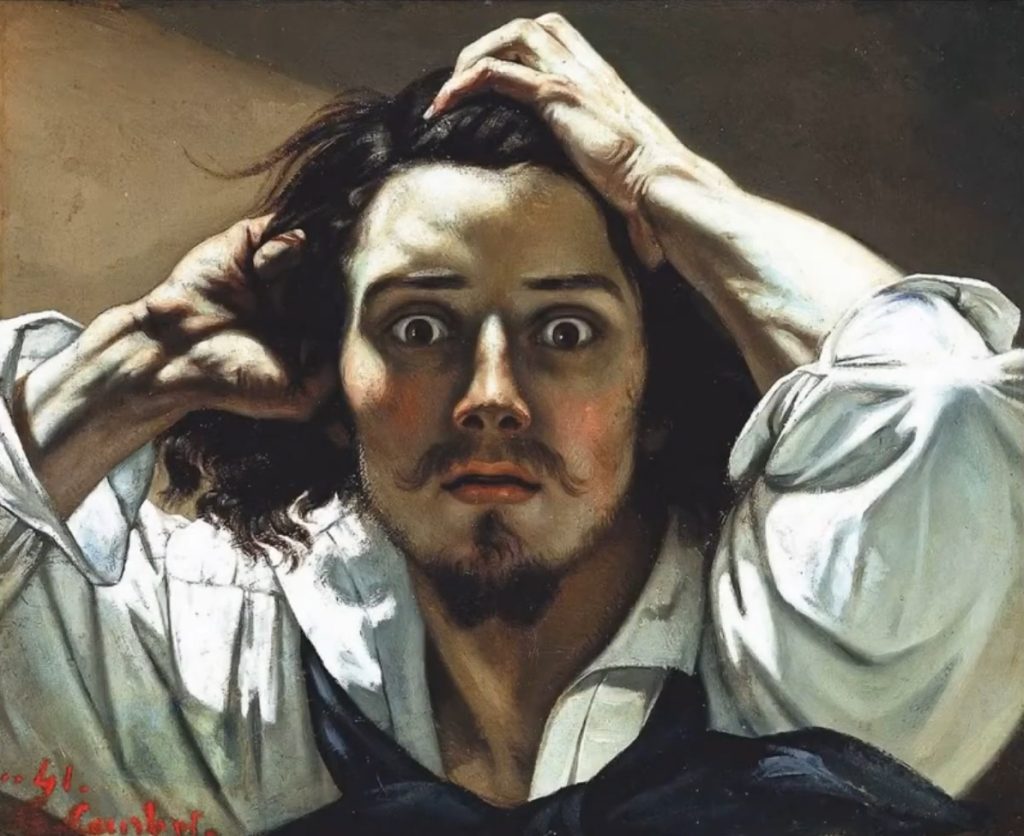
Gustave Courbet’s “The Desperate Man,” created in 1845, vividly portrays his emotional state. Courbet pulls his hair, confronting the viewer with wide eyes that convey anxiety and determination.
This self-portrait exemplifies Romanticism through its expressive brushwork and realism. His work breaks conventions of the time, emphasizing personal experience and raw emotion.
Courbet used his art to advocate for a new direction in art history, challenging established norms and asserting his identity as an innovative artist.
10. Napoleon Crossing the Alps – Jacques-Louis David

Jacques-Louis David’s “Napoleon Crossing the Alps,” created between 1801 and 1805, features the iconic figure of Napoleon on horseback, embodying strength and determination.
The painting captures Napoleon as he leads his troops through the formidable Great St Bernard Pass. David’s use of bold colors and dynamic composition highlights the drama of the moment.
This masterpiece not only celebrates Napoleon’s military prowess but also symbolizes his ambition to unite Europe under French rule, making it a defining piece of Neoclassical art.
11. The Floor Scrapers – Gustave Caillebotte

Caillebotte’s The Floor Scrapers, painted in 1875, highlights three topless working-class men engaged in their labor, showcasing a unique perspective that emphasizes their physicality.
The artist masterfully balances light and shadow, creating depth and realism in the scene. Initially rejected by the Paris Salon for its subject matter, this painting later gained recognition for its innovative use of perspective and natural light, marking it as a pivotal piece in the discussion of masculinity in art.
12. The Blue Boy – Thomas Gainsborough
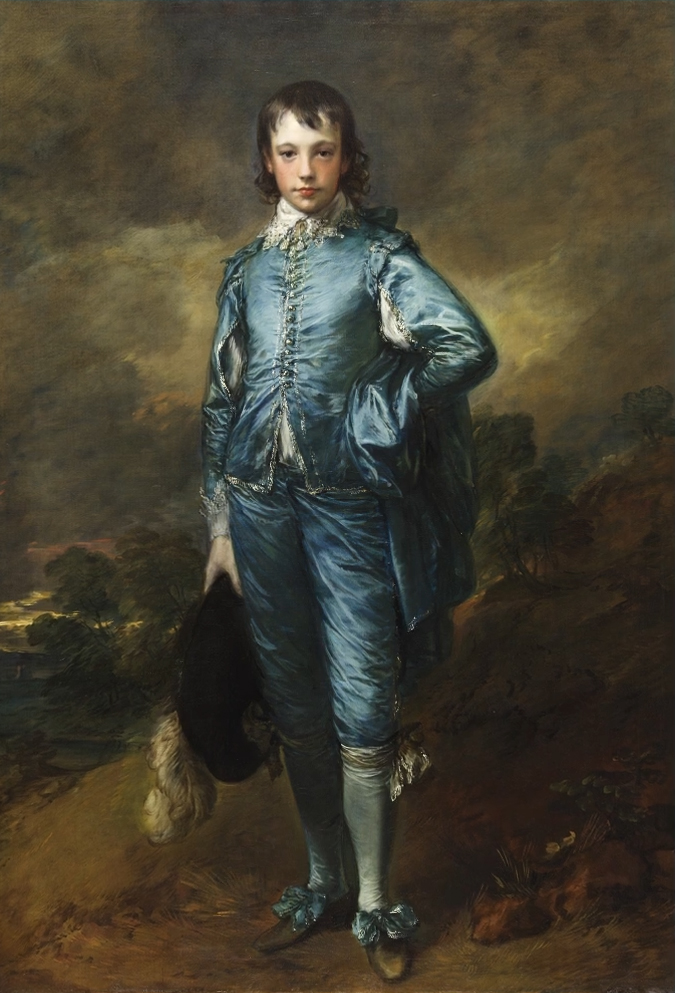
Gainsborough’s “The Blue Boy,” painted around 1770, features a young man dressed in striking 17th-century attire, paying homage to Anthony van Dyck.
The portrait, often thought to depict Jonathan Buttall, reflects a deep emotional engagement and masterful brushwork.
Many believe Gainsborough’s nephew, Gainsborough Dupont, is the likely sitter. The painting’s vivid blue hues evoke both confidence and youth, making it a standout piece in American art history, currently housed in The Huntington, California.
13. Portrait of Professor Benjamin H. Rand – Thomas Eakins
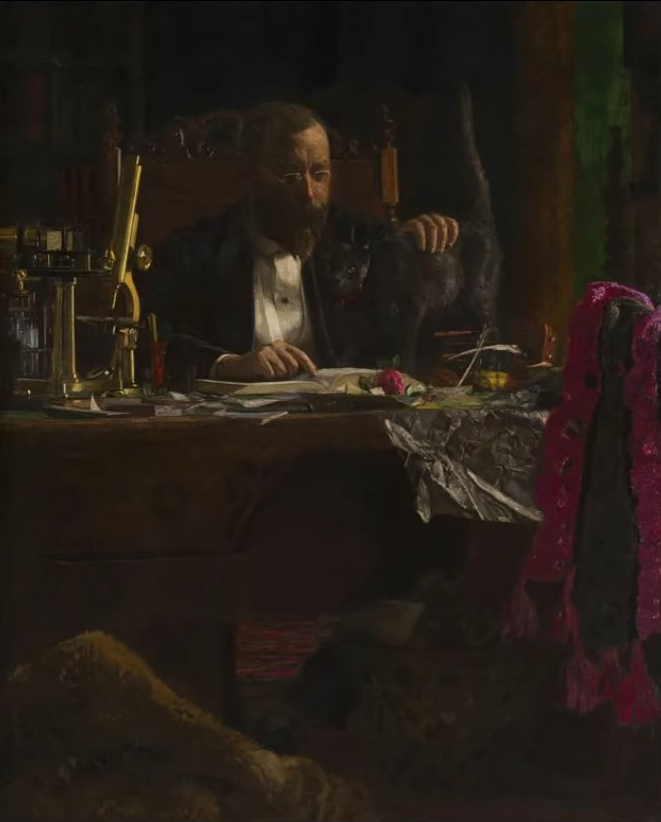
Eakins’s “Portrait of Professor Benjamin H. Rand,” painted in 1888, exemplifies his commitment to realism. The painting captures Rand, a prominent figure in the medical field, seated in a relaxed pose, engrossed in thought.
Eakins employs natural lighting to highlight Rand’s thoughtful expression, emphasizing his intellectual depth.
The meticulous details in Rand’s attire and the surrounding environment reflect Eakins’s mastery in depicting human character and the complexities of personality, making this portrait a significant work in American art history.






